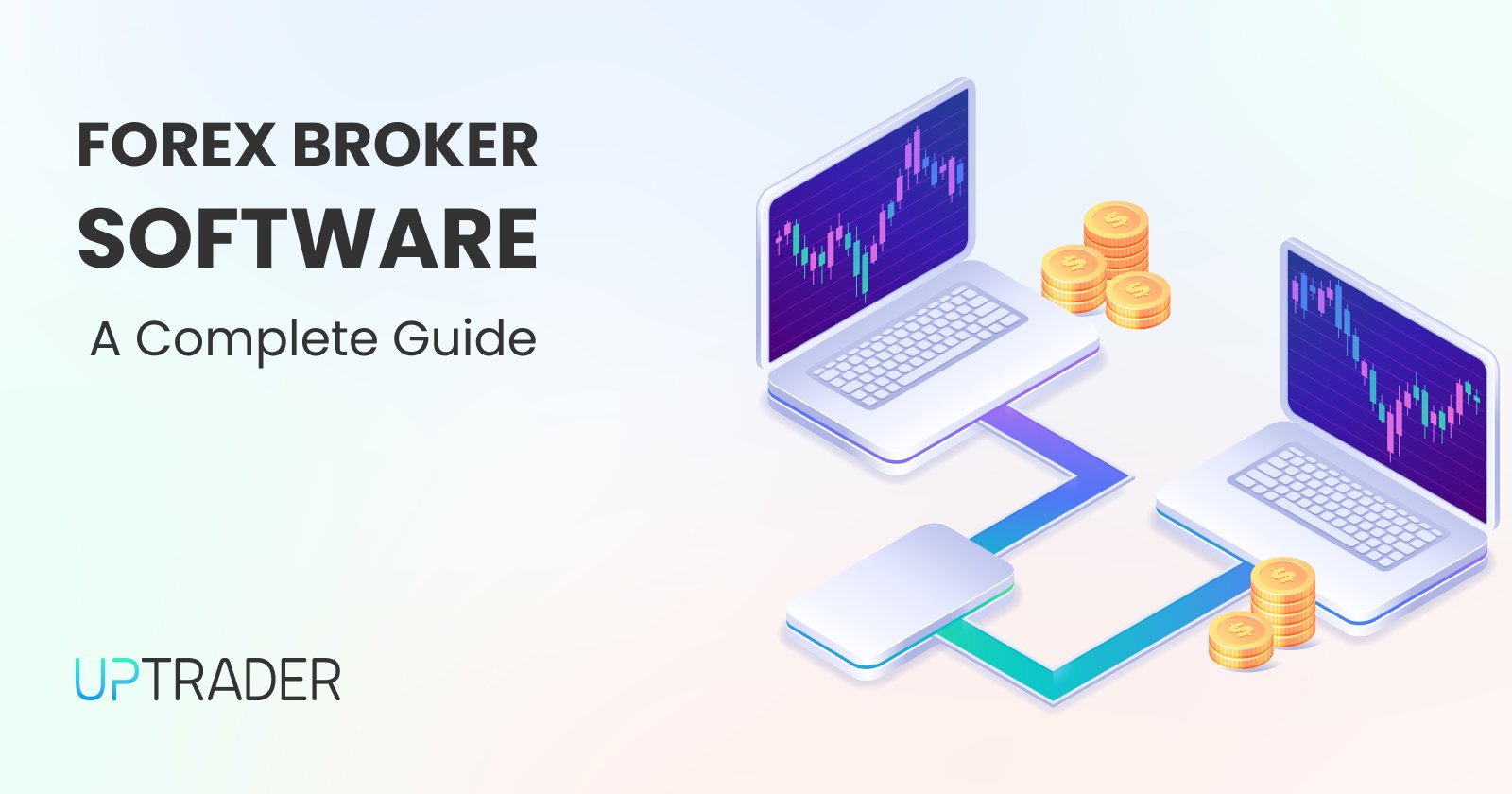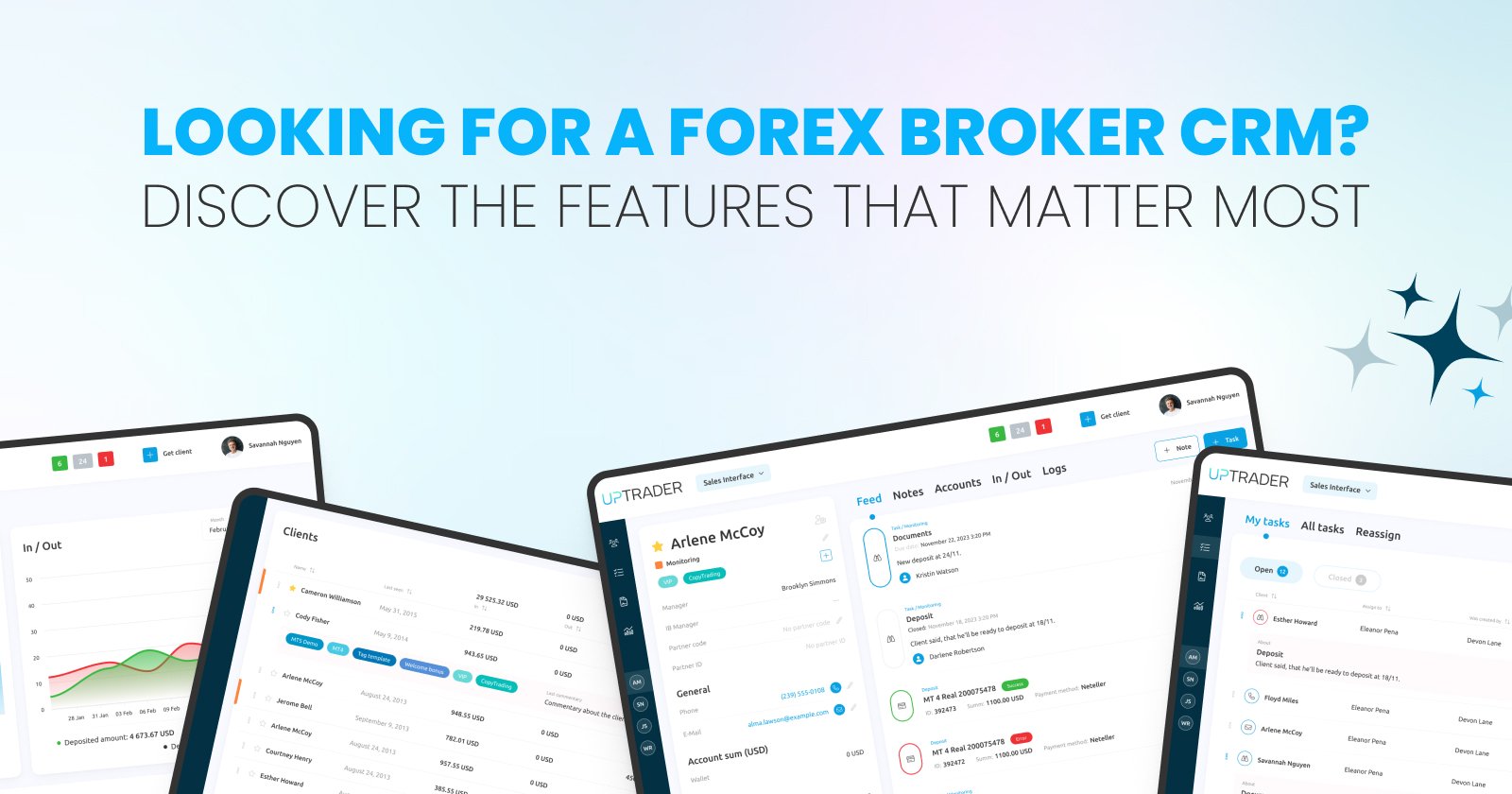Forex Broker Software: A Complete Guide

Share this publication:
A forex broker is a type of brokerage firm that allows both retail and institutional traders to access the currency markets to trade in foreign currencies. Forex broker software, or trading platform software, is a multi-module suite that supports the automation of trade execution and order routing as well as risk management and client account management. This software must enable real-time market data feeds to be graphed and ordered, administered through self-sufficient back-office processes such as reconciliation, billing, and regulatory reporting. Top platforms such as MetaTrader and other proprietary offerings excel in social trading features and enable traders to make selections during the interface with rapid FX trading.
Core Components of Forex Broker Software
A modern Forex brokerage solution comprises several interlinked modules, each fulfilling a critical operational role.
Trading Platform & Market Access
The trading platform offers a one-stop shop for traders as it provides order execution and real-time price feeds complemented with aids for in-depth analysis. High-level charting modules allow for the visualization of price movements alongside other technical indicators, which help in making rapid decisions. Flexibility in command precision is provided by the various order types, which include but are not limited to market and limit orders, iceberg, and time-weighted executions. Integration through FIX API or proprietary gateways aids in connecting with the liquidity providers.
Back-Office & CRM
Account onboarding, KYC/AML checks, fund settlements, and reconciliation are done by the back-office systems. A dedicated module of CRM improves retention and efficiency by automating communication and marketing. Cloud-based solutions for Forex brokers come with an AI chatbot, automated ticketing, and analytics to keep track of clients and their sentiments. Some advanced providers offer customizable and scalable SaaS CRMs that integrate with trading systems, so brokerages can direct their energy into growing their business rather than worrying about their infrastructure.
Risk Management & Compliance
Pre-trade risk components impose margin, maximum exposure, and stop-out requirements in real-time to protect from systemic and client-level risk. Identifying vulnerabilities can be done through portfolio modeling and stress-testing in post-trade by simulating extreme market scenarios. Automated reporting to jurisdictional regulators, enforcement of KYC/AML workflows, maintaining an audit trail, and enforcing jurisdictional requirement checklists ensure compliance. Brokers operating in the United States have to follow rules from the CFTC and NFA, such as maintaining client funds in segregated accounts and submitting daily and monthly reports to the regulators.
Liquidity Management
Liquidity has to be present for Forex trades to continue. Broker software connects to LPs, enhancing competition in pricing by pooling bid and ask quotes.. Brokers often partner with LPs offering ECN or STP models, reducing conflict of interest and ensuring transparent price formation.
Reporting, Analytics & APIs
Comprehensive reporting tools generate client statements, P&L reports, and regulatory filings. Advanced analytics modules leverage big-data techniques to identify trading patterns, client behavior, and potential compliance risks. Modern platforms expose RESTful and FIX APIs, enabling integration with third-party tools — such as algorithmic trading engines, risk analytics suites, and custom dashboards — facilitating extensibility and innovation.
Types of Forex Broker Software
Brokers can choose from three primary deployment models, each with distinct trade-offs in time-to-market, cost, and customization.
Off-the-Shelf Solutions
These turnkey packages offer rapid deployment and proven stability. Vendors bundle trading, back-office, and risk modules in a single offering, often with minimal customization. While cost-effective, off-the-shelf solutions may limit unique feature development and proprietary branding.
White-Label Solutions
In a white-label arrangement, a broker licenses an existing platform — rebranding it as their own — without building core technology in-house. White-label providers handle maintenance, upgrades, and compliance updates, allowing brokers to launch quickly with lower upfront investment. Leading banks and fintech firms offer white-label trading infrastructure supporting FX, CFDs, and options across multi-asset portfolios.
Bespoke / Custom Solutions
For maximum differentiation and control, some brokers opt for custom-built software. Development partners implement tailored solutions that meet unique performance, branding, and regulatory needs. Custom approaches offer complete flexibility but require substantial investment, longer timelines, and dedicated maintenance teams.
Regulatory & Security Considerations
Compliance and security are foundational to broker credibility and client trust.
Regulatory Compliance
Each jurisdiction imposes capital requirements, licensing mandates, reporting schedules, and fund segregation rules. Compliance modules must generate audit-ready documentation, automate submission of regulatory returns, and enforce KYC/AML checks, minimizing legal risk and protecting against financial crime. In the U.S., adherence to CFTC/NFA regulations includes periodic financial reporting and strict custody arrangements for client assets.
Security Protocols
Top-tier brokerages implement industry-standard encryption (TLS/SSL), multi-factor authentication (MFA), and network segmentation to safeguard data in transit and at rest. Platforms certified under ISO 27001 employ MFA, secure data centers, and formal information security management systems to maintain confidentiality and integrity. Secure authentication mechanisms, including biometric logins and smart access controls, prevent unauthorized access.
Selecting & Implementing Forex Broker Software
Choosing the right solution involves evaluating multiple factors:
- Functional Fit: Does the software cover required modules — trading, risk, CRM, back-office — and allow future expansion?
- Vendor Reputation: Assess track records, client references, and uptime SLAs before committing.
- Total Cost of Ownership: Consider licensing fees, customization costs, hosting, and ongoing support expenses.
- Integration Capabilities: Ensure robust APIs, data export/import options, and compatibility with external trading or analytics engines.
- Compliance Support: Verify that the solution automates regulatory reporting and adapts to new legal frameworks.
- Implementation Roadmap: Define project milestones — requirements gathering, development/customization, testing, user training, and go-live — within achievable timelines and budgets.
Future Trends in Forex Broker Software
The next wave of innovation is driven by technology and evolving trader expectations:
AI & Machine Learning
AI-powered algorithms enhance fraud detection, client profiling, and personalized recommendations, boosting operational efficiency and client retention.
Blockchain & Distributed Ledger
Blockchain promises transparent trade settlement, immutable audit trails, and tokenized asset offerings — potentially reducing counterparty risk and settlement times in Forex markets.
Mobile-First & Cloud-Native Architectures
With smartphones as primary trading devices for many clients, brokers are prioritizing mobile-optimized front ends and cloud-native back ends to ensure scalability, resilience, and rapid feature deployment.
Social & Copy Trading Integration
Community-driven platforms allow novice traders to mirror seasoned professionals’ strategies, democratizing access to sophisticated trading techniques and fostering client engagement.
Conclusion
Forex broker software is the technological backbone of modern currency trading firms, encompassing trading interfaces, back-office automation, risk controls, liquidity management, and compliance enforcement. Brokerages must weigh deployment models — off-the-shelf, white-label, or bespoke — against their strategic goals, regulatory obligations, and budget constraints. Security and compliance are paramount, with encryption, MFA, and standardized information security frameworks safeguarding operations. Looking forward, AI, blockchain, mobile-first design, and social trading are set to transform platform capabilities, making broker software more intelligent, transparent, and user-centric than ever before. By carefully evaluating functional needs, vendor strengths, and future-proof technologies, firms can select and implement solutions that drive growth, maintain trust, and adapt to the rapidly evolving Forex landscape.
You can implement a robust CRM (Customer Relationship Manager) solution like UpTrader to help automate tasks and bring attention to more important tasks. Talk to a consultant on our site today to get a personalized demo.







